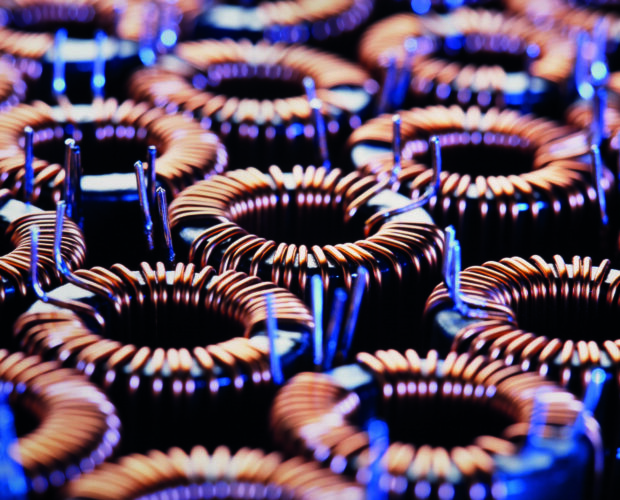EMI is essentially managed on three fronts: shielding, grounding, and absorption.
By John Sandy, Supplier Marketing Manager at TTI IP&E

Around 1 percent of the white noise we hear in radio static is cosmic background radiation resulting from the Big Bang. This alone should stand as evidence of how ever-present electromagnetic interference (EMI)—also known as radio frequency interference (RFI)—is and how important it is to manage its effects on electronic devices.
EMI explained
It’s not difficult to find examples of EMI as it comes from multiple sources. Some natural sources that affect electronic devices through producing electromagneticfields (EMFs) are lightning, solar storms, and solar flares. Human-made EMI can come from high-power radio, electrical sources, and even everyday devices like cellphones; it can also come from malfunctioning or improperly designed consumer devices. This kind of interference can have an effect that ranges all the way from a minor annoyance in a consumer application to a potential disaster in aerospace, transportation, and military operations.
Deliberate EMI is often deployed in warfare to block signals and jam enemy radio communications. The desired signal will be lost whenever unwanted signals are stronger than the desired signal, thereby resulting in a poor signal-to-noise ratio (SNR). In addition, a poor SNR can result in data loss, incorrect instrument readings, and— in some instances—total shutdown. This is why a big part of electronic engineering involves managing SNR to ensure circuits, radio components, and wiring receive only the correct information from the airwaves.
Managing EMI
Since nothing can be done to pluck any unwanted signals out of the air and remove them, individual electronics and components need to be protected from undesired signal interference. As discussed below, EMI is essentially managed on three fronts: shielding, grounding, and absorption.
EMI shielding
Shielding is the first line of defense against EMI. The Shannon-Hartley theorem dictates the rate at which information can be communicated over a given channel in the face of this noise. Also known as the Shannon-Hartley Capacity Theorem, or simply Shannon’s Law, the theorem illustrates the importance of a strong signal-to-noise ratio in the face of EMI. In essence, the theorem reads that increased bandwidth demands greater spectrum availability at higher frequency bands, while a high SNR demands a reduction in EMI noise levels, and the most effective way to reduce EMI noise levels is through shielding.
Display wraps on digital displays and bond line gap shielding to deflect EMI at the seams of electronic devices can help prevent unwanted signals from contacting sensitive components in the first place. Optimized Faraday cages with no gaps or slots can also help to keep EMI out.
Conductive gaskets, tapes, and adhesives can be especially helpful in providing handheld devices with shielding without adversely affecting weight and dimensions.
EMI grounding
EMI grounding works in tandem with shielding. It is the process by which unwanted electrical interference is diverted in a safe direction. Electrostatic discharge (ESD) functions, chassis grounding, and sensor grounding can all help ensure that when devices do attract EMI, it will be safely redirected.
You need your grounding solutions to be low- impedance, of course, and grounding solutions have been explored to great success at a very small level, right down to pins, screws, and conductive tapes used to assemble electrical devices.
EMI absorption
EMI absorbers essentially function like lightning rods or sponges placed between the EMI source and the component. Specialized cable wraps and inserts placed inside the body of an electronic device can also absorb unwanted signals. This is achieved with magnetically or dielectrically lossy materials, depending on the frequency. Typically, one would use magnetic solutions below 1GHz, while electrical solutions become more effective above 6GHz. And, of course, in addition to all of this, you need smart design from the ground up. Emphasizing low contact resistance, for instance, can reduce any unintentional EMI produced by the device itself.
EMI problem-solving at scale
The only way to effectively handle EMI is through a series of small, custom-built parts that can be used to wrap, shield, ground, and otherwise protect your electronic devices.
As with any other electrical component, developing these parts involves experimentation, research, prototyping, and testing. Once you have what you need, you must produce enough pieces to meet your production demands and keep your devices, products, and network up and running.
From there, it can be a logistical nightmare: stocking and restocking the part, filing and categorizing it, managing your inventory, and ensuring that your team has a steady supply of everything they need to keep your pipeline humming.
Prototyping and sourcing these parts at scale and a competitive price from dependable, consistent suppliers is easier said than done. It demands an on-the-ground knowledge of the manufacturing industry, as well as your own.
Electromagnetic compatibility, or EMC, is the ability of your electrical equipment to function in a given environment, which is key to succeeding in your field. Still, there’s no one-size-fits- all solution to the question of EMC. This is why you need to work with distribution partners who can provide customized solutions for every hurdle you need to clear, consistently and at scale.
Figuring out exactly what you need to achieve your desired results is easier said than done, and it demands some trial and error. Exploring long-term solutions means working with a team that fully understands your challenges and how to help you tackle them within a set budget and timeframe. TTI can help ensure you meet your goals and hit your deadlines without any hangups. At TTI, we pride ourselves on our ability to take this burden off our partners’ shoulders. We put our decades of experience in the field to work in sourcing the components needed for the job and stocking and categorizing them so that they can be deployed like any other part used in the process.
Conclusion
EMI isn’t going anywhere, and we’ll likely never be able to develop a truly EMI-proof circuit board. As long as our systems depend on electronic signals to transfer information, EMI will be a problem. Dealing with that problem across a whole network, system, or production pipeline means working with
a distributor who understands your needs and can handle sourcing and delivery.
At TTI, we aim to keep our partners competitive, keeping them on the cutting edge of the technological frontier by ensuring easy access to the parts they need.

